Kanchenjunga Expedition
Mount Kanchenjunga, the third-highest mountain in the world, is an impressive peak located within the Himalayas. Its name, derived from Tibetan, translates to "Five treasures of the snow," representing the five distinct peaks that comprise the mountain. These peaks are Kanchenjunga Main (8,586m), Kanchenjunga West (Yalungkang, 8,505m), Kanchenjunga Central (8,482m), Kanchenjunga South (8,494m), and Kangbachen (7,903m). Each peak symbolizes a repository of God, including gold, silver, gems, grains, and holy books. Kanchenjunga Main, Kanchenjunga Central, and Kanchenjunga South are located on the border of North Sikkim in India and the Taplejung District in Nepal, while the other two peaks are entirely within the Taplejung District.
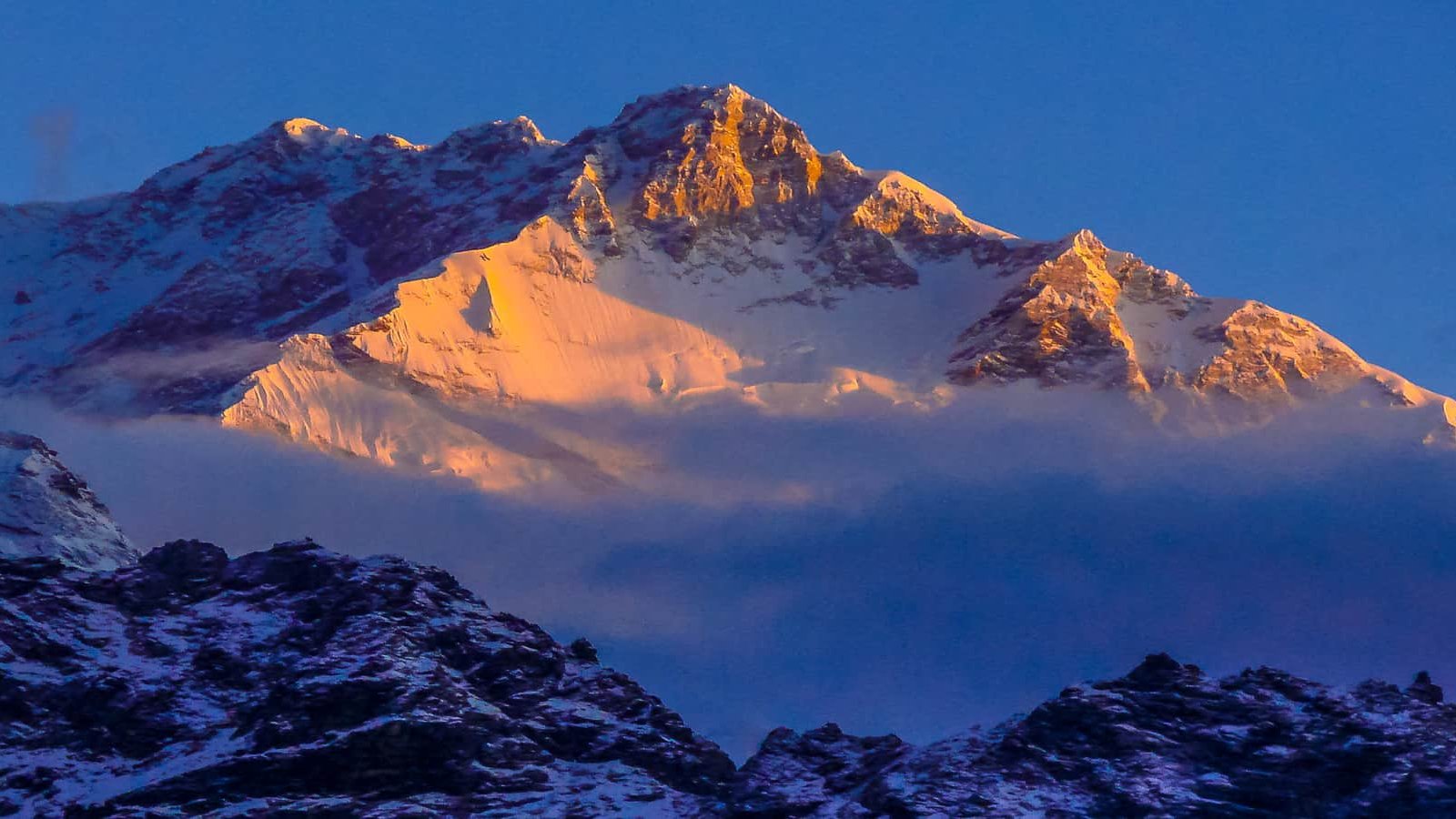
There are four identified routes to reach the summit of Kanchenjunga three of which originate in Nepal. However, the northeastern route from Sikkim has been prohibited by the Indian Government since 2000. The Sikkim route was used only three times before the ban was implemented. The South and North base camps in Nepal are the popular starting points for climbers attempting to conquer the mountain.
The expedition is meant for experienced climbers due to the challenging nature of the climb. The mountain is prone to snowstorms and avalanches, demanding proficiency in high-altitude ascents. With its stunning landscape and multiple peaks towering above 7000m, Kanchenjunga offers a captivating visual experience. The ascent to the summit follows a technical route on rock and ice, with the final stretch being a relatively straightforward climb.
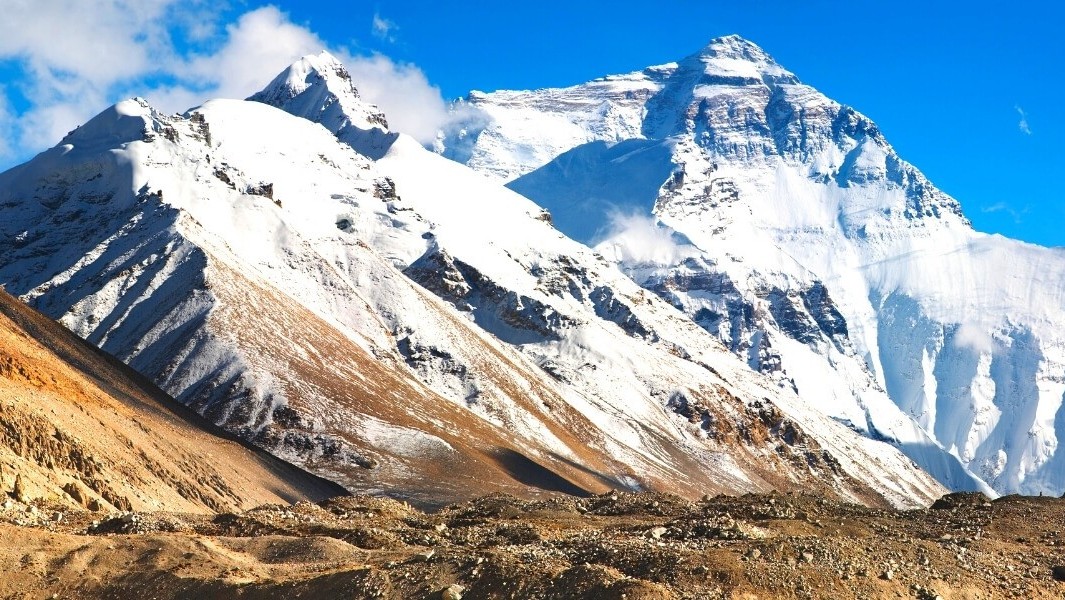
The Kanchenjunga Massif boasts five glaciers that contribute to its remarkable topography: Zemu, Kanchenjunga, Yalung, Talung, and Ramtang. These glaciers form several rivers, including the Sapta Koshi River in Nepal and the Teesta River in India, which flow through breathtaking landscapes before reaching their destinations.
History of the Kanchenjunga Expedition
The history of the Kanchenjunga Expedition begins with early reconnaissance in 1848 when British surveyors first observed the mountain from a distance and named it Kanchenjunga. The first documented attempt to climb Kanchenjunga took place in 1905 by a British team led by Aleister Crowley, but they were unsuccessful in reaching the summit. It wasn't until 1955 that the first successful ascent of Kanchenjunga was achieved by a British expedition led by Charles Evans, with Joe Brown and George Band reaching the summit via the South Face. Subsequent expeditions have attempted different routes and variations, with the North Ridge being climbed by an Indian team in 1973. Over the years, climbers from various countries have successfully summited Kanchenjunga using different routes, establishing its reputation as a challenging and sought-after objective. Notable expeditions, such as Reinhold Messner and Peter Habeler's attempt in 1979 and Jerzy Kukuczka's solo ascent in 1991, have further contributed to the mountain's history. Today, the Kanchenjunga Expedition continues to attract mountaineers from around the world, showcasing the spirit of exploration and human determination in the face of extreme challenges.
Highlights of the Kanchenjunga Expedition
Here are the highlights of the Kanchenjunga Expedition in point form:
- Third-highest peak: Mount Kanchenjunga is the third-highest mountain in the world at 8,586 meters (28,169 feet).
- Untouched natural beauty: The expedition takes you through pristine landscapes, including forests, valleys, glaciers, and panoramic views of other Himalayan peaks.
- Remote and challenging terrain: The region offers rugged and technical terrain, including icy ridges, crevasses, and avalanche-prone areas.
- Cultural immersion: Interact with indigenous communities, such as Sherpas and Limbus, and experience their unique traditions and way of life.
- Multiple route options: Choose between the South Base Camp and North Base Camp approaches, each providing different challenges and scenic views.
- High altitude experience: Test your physical and mental endurance at extreme altitudes, adapting to thin air and reduced oxygen levels.
- Panoramic views: Enjoy breathtaking panoramic views of Everest, Lhotse, Makalu, and other Himalayan peaks from the summit of Kanchenjunga.
- Personal growth and achievement: The expedition offers personal growth, resilience, teamwork, and a sense of accomplishment upon successfully summiting Kanchenjunga.
These highlights combine to create a memorable and rewarding experience for climbers on the Kanchenjunga Expedition.
Routes for the Kanchenjunga Expedition
The Kanchenjunga Expedition offers several route options for climbers to choose from. Each route has its own challenges and characteristics. Here are the main routes commonly used for the Kanchenjunga Expedition:

South Base Camp Route
The South Base Camp Route is the most commonly used and popular route for the Kanchenjunga Expedition. Here is an overview of the South Base Camp Route:
Starting Point: The South Base Camp Route begins in Taplejung, a town in eastern Nepal. From there, climbers embark on a trek that takes them through remote villages, terraced fields, and dense forests.
Trekking Phases: The trek to Kanchenjunga's South Base Camp is divided into several phases, allowing climbers to acclimatize gradually to the increasing altitude. The initial stages of the trek involve crossing suspension bridges over roaring rivers and ascending through rhododendrons and bamboo forests.
Villages and Camps: Along the way, climbers pass through traditional villages inhabited by ethnic communities like the Limbu and Rai. These villages provide insight into the local culture and way of life. As the trek progresses, climbers set up camps at various altitudes, including campsites at Chirwa (1,270m), Sekathum (1,660m), Amjilosa (2,420m), Gyabla (2,730m), and Ghunsa (3,475m).
Ghunsa: Ghunsa is a significant village along the South Base Camp Route, located at an elevation of 3,475 meters. It serves as a base for acclimatization and rest, allowing climbers to adapt to the high altitude before proceeding further. Ghunsa offers basic accommodations and supplies, including tea houses and lodges.
Ramche and Mirgin La: After Ghunsa, the route leads climbers to Ramche (4,580m), which serves as the last base camp before the final ascent. Ramche offers stunning views of the Yalung Glacier and Kanchenjunga's South Face. From Ramche, climbers often make a side trip to the viewpoint at Mirgin La (4,480m) to enjoy panoramic vistas of the surrounding peaks.
South Base Camp: The South Base Camp is located at an elevation of 4,700 meters. From Ramche, climbers ascend steep slopes, traverse icy sections, and negotiate challenging terrain to reach the South Base Camp. This camp serves as the starting point for the summit push.
Summit Push: From the South Base Camp, climbers face the most demanding and technical part of the expedition. The ascent involves navigating steep ice slopes, crossing crevasses, and overcoming challenging sections on the mountain. Weather conditions play a crucial role in determining the success of the summit attempt.
Summit and Descent: Upon reaching the summit of Kanchenjunga, climbers are rewarded with breathtaking views of the Himalayas. After a brief celebration, climbers carefully descend back to the South Base Camp, retracing their steps through the challenging terrain.
The South Base Camp Route offers a blend of natural beauty, cultural experiences, and mountaineering challenges. Climbers should be prepared for long and demanding treks, high-altitude conditions, and extreme weather fluctuations. Working with experienced guides or joining organized expeditions is highly recommended to ensure safety and increase the chances of a successful summit bid.
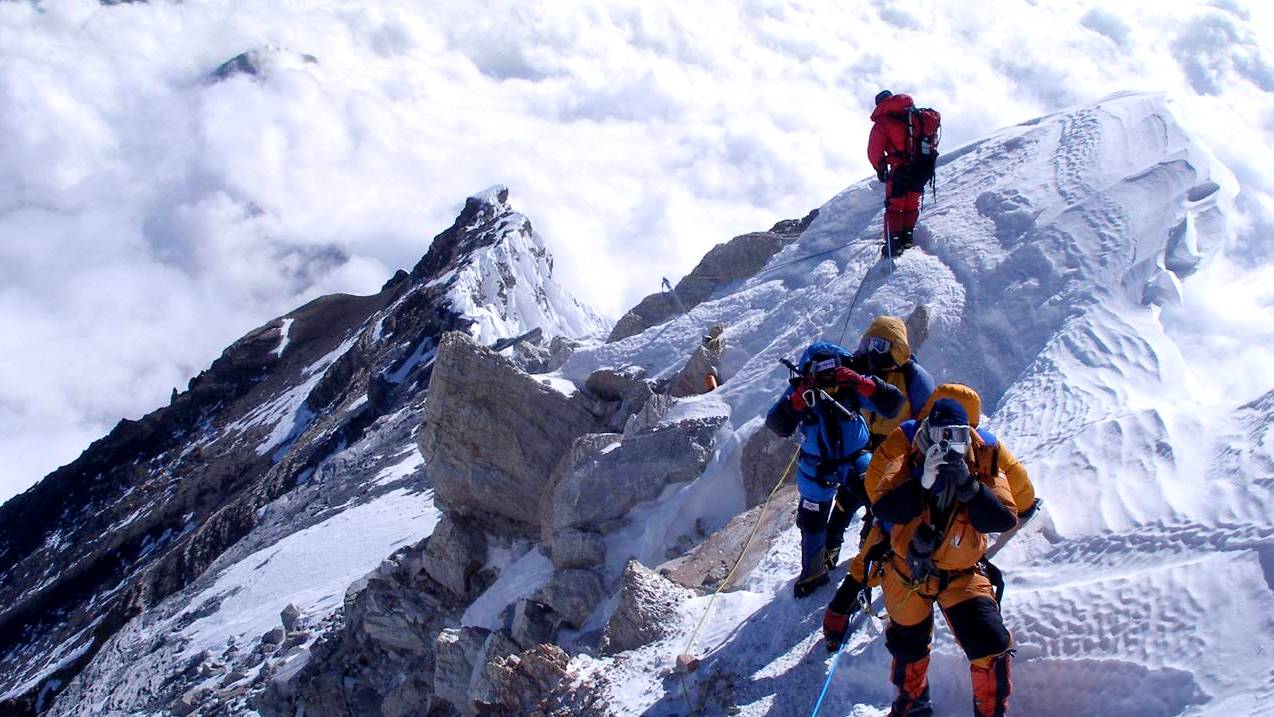
North Base Camp Route (India Side)
The North Base Camp route starts from the Indian state of Sikkim. This route is less frequently used than the South Base Camp route. It involves a trek from Yuksom to the Zongri Plateau, passing through beautiful rhododendron forests and alpine meadows. Climbers establish camps at Green Lake (5,100m) and then proceed to the North Base Camp (5,180m). From there, they ascend the North Ridge, which presents technical challenges and steep terrain, before reaching the summit.
Kangchenjunga Glacier Route
This is an alternative route that approaches Kanchenjunga from the northwest. The route follows the Kangchenjunga Glacier, passing through the Pangpema Base Camp (5,143m) and onto the North Face of the mountain. This route offers stunning views of the glaciers and surrounding peaks but is less popular due to its technical difficulties and the need for additional permissions.
Yalung Glacier Route
The Yalung Glacier Route is another option that starts from the Yalung Base Camp, which is accessible from both the South Base Camp and the North Base Camp routes. Climbers traverse the Yalung Glacier, negotiating crevasses and steep ice slopes. This route provides an alternative approach to the main summit and requires careful route-finding and mountaineering skills.
It's important to note that the Kanchenjunga region is highly remote and challenging, and climbers should be well-prepared, experienced, and equipped for high-altitude mountaineering.
Mountain views seen during the Kanchenjunga Expedition
The Kanchenjunga Expedition offers breathtaking mountain views, allowing climbers to witness the majestic peaks of the Kanchenjunga Massif. Here are some of the notable mountain views you can expect to see during the expedition:
Kanchenjunga Main: The expedition's main highlight is, of course, Kanchenjunga Main, which is the third-highest mountain in the world with an elevation of 8,586 meters (28,169 feet). The peak itself is a sight to behold, with its towering presence and awe-inspiring beauty.
Kanchenjunga West: Also known as Yalung Kang, Kanchenjunga West stands at an impressive height of 8,505 meters (27,904 feet). It offers a dramatic backdrop and adds to the grandeur of the Kanchenjunga Massif.
Kanchenjunga Central: With an elevation of 8,482 meters (27,828 feet), Kanchenjunga Central, or Middle, is another prominent peak in the massif. Its rugged and jagged features create a stunning spectacle for climbers.
Kanchenjunga South: Although slightly lower than its neighboring peaks, Kanchenjunga South still reaches an impressive height of 8,494 meters (27,867 feet). It completes the quartet of main summits in the Kanchenjunga Massif and contributes to the overall panoramic views.
Kangbachen: Located on the northern side of the Kanchenjunga Massif, Kangbachen is a subsidiary peak that offers mesmerizing vistas. It stands at 7,903 meters (25,928 feet) and adds to the beauty of the surrounding mountain scenery.
Jannu: Although not a part of the Kanchenjunga Massif itself, Jannu (or Kumbhakarna) is a neighboring mountain that is often visible during the expedition. Standing at 7,710 meters (25,296 feet), it presents an imposing presence on the horizon.
These are just a few of the stunning mountain views that await climbers on the Kanchenjunga Expedition. The entire region is blessed with unparalleled natural beauty, and the experience of witnessing these peaks up close is truly awe-inspiring.
How Difficult Is The Kanchenjunga Expedition?
The Kanchenjunga Expedition is widely considered one of the most challenging mountaineering endeavors in the world. It requires a high level of mountaineering skill, physical fitness, and prior experience in high-altitude climbing. Here are some factors that contributed to the difficulty of the expedition:
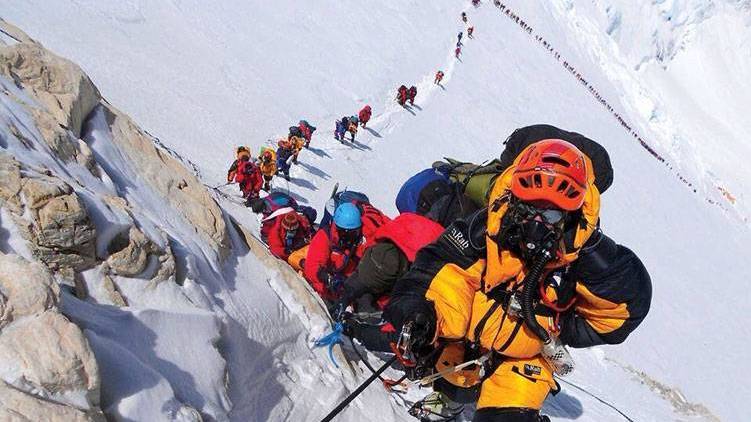
Technical Challenges
The Kanchenjunga Expedition presents mountaineers with a range of formidable technical challenges. The route involves navigating steep slopes, requiring climbers to ascend and descend on snow, ice, and rock faces. Ice climbing skills are essential for tackling vertical or near-vertical ice walls and icefalls encountered along the way. Mixed climbing, which combines rock, ice, and snow, demands versatility in adapting to different climbing techniques. Fixed ropes are often used to assist climbers in traversing difficult sections, necessitating proficiency in ascending and descending using specialized equipment. Glaciated areas may feature crevasses, requiring expertise in rope techniques and crevasse rescue. Moreover, the expedition takes climbers to high altitudes, where reduced oxygen levels, extreme cold, and harsh weather conditions pose additional challenges. Mountaineers must possess the necessary technical skills, experience, and knowledge to safely overcome these obstacles and achieve a successful ascent of Kanchenjunga.
Altitude
The Kanchenjunga Expedition involves climbing peaks with high altitudes. The main peak, Kanchenjunga Main, stands at an elevation of 8,586 meters (28,169 feet). Throughout the expedition, climbers will encounter varying altitudes, including campsites at different levels, high passes, and sections of steep ascent and descent. The altitude poses significant challenges due to reduced oxygen levels and the associated risks of altitude-related illnesses. It is crucial for climbers to acclimatize properly and be prepared for the physiological effects of high altitude.
Length and Duration
The Kanchenjunga Expedition is a demanding endeavor that typically spans around 6 to 8 weeks, although the exact duration can vary. Factors such as the chosen climbing route, acclimatization needs, weather conditions, climbing pace, and logistical considerations all contribute to the overall length of the expedition. Climbers have the option of ascending via the South Base Camp route from Nepal or the North Base Camp route from Sikkim, India. Adequate acclimatization periods at various altitudes are incorporated into the itinerary to allow climbers to adapt to the high-altitude environment. Unpredictable weather conditions, including storms and heavy snowfall, may require waiting for suitable climbing windows, which can extend the duration. The pace of the climb and the inclusion of rest days are essential for maintaining physical stamina and recovery. Logistics, such as obtaining permits, arranging porters and supplies, and establishing camps, also take time and influence the overall duration. It's important to consider that these timeframes are approximate, and the actual expedition length can vary depending on multiple factors and the progress of the climbing team.
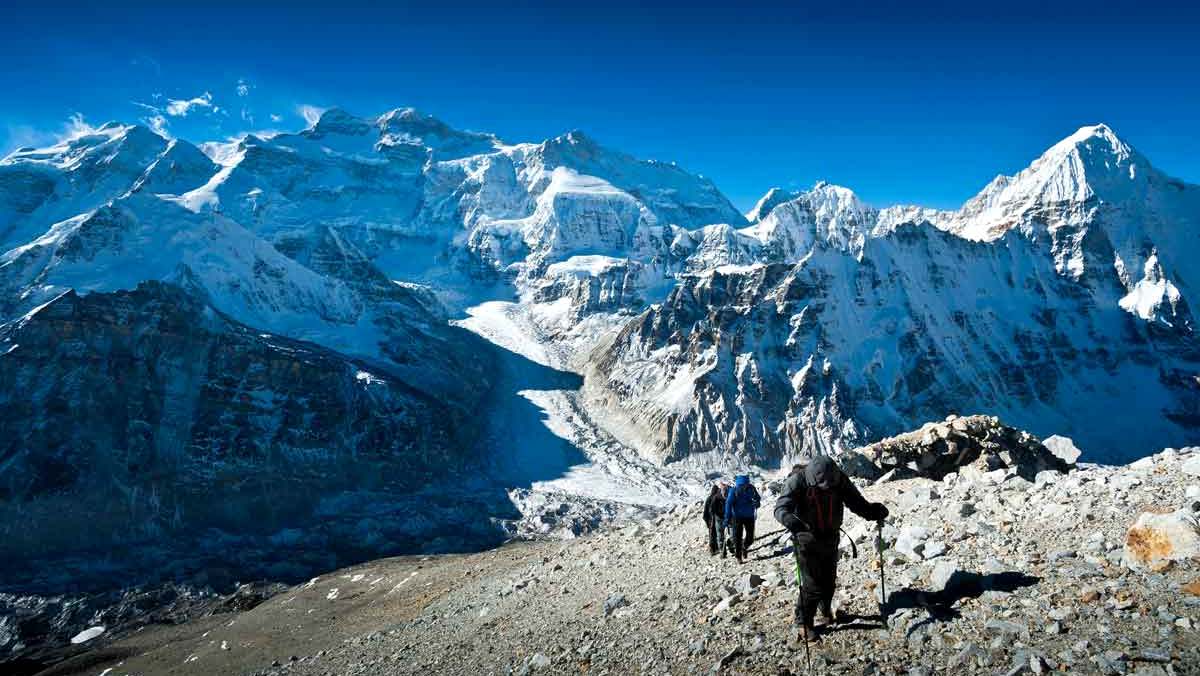
Weather Conditions
Weather conditions during the Kanchenjunga Expedition can be highly variable and challenging. The region experiences unpredictable weather patterns, rapid temperature changes, and shifting cloud cover. The monsoon season (June to September) brings heavy rainfall and poor visibility, while winters are characterized by freezing temperatures, strong winds, and heavy snowfall. Climbers must plan their expeditions during the appropriate climbing seasons to avoid the worst weather conditions. High winds and significant precipitation, both rain and snow, are common. Monitoring weather forecasts, being prepared for adverse conditions, and making informed decisions are essential for a safe and successful climb.
How to prepare for the Kanchenjunga Expedition
Preparing for the Kanchenjunga Expedition requires a high level of physical and mental preparation. Given the extreme altitude of the mountain, it is crucial to be in optimal physical condition. Acclimatization plays a vital role in the expedition's success, so allocating sufficient time to adapt to the high altitude is essential. The route to the summit is challenging, and prioritizing safety is paramount. Engaging in an aerobic fitness program specifically designed for high altitudes is recommended for at least six months to a year before the expedition. This program should include activities such as running, climbing, hiking, and other endurance-building exercises. Adequate physical preparation will facilitate a faster acclimatization process and enhance your chances of a successful expedition. Additionally, mental preparedness is equally important. Develop a strong mindset, resilience, and determination to overcome the challenges you may encounter along the way. By combining physical fitness, acclimatization, and mental preparedness, you will be better equipped to take on the Kanchenjunga Expedition and increase your chances of reaching the summit safely.
Permits for the Kanchenjunga Expedition
Permits are required for the Kanchenjunga Expedition as it involves climbing in a restricted area and is subject to government regulations. Here's a brief overview of the permit requirements:
Restricted Area Permit (RAP): The Kanchenjunga region falls under the restricted area category in Nepal. To enter and climb in this region, climbers must obtain a Restricted Area Permit (RAP) issued by the Nepal Department of Immigration. The RAP is typically obtained through a registered trekking or expedition agency in Nepal.
Trekking Permit: In addition to the RAP, climbers must also acquire a Trekking Permit. This permit allows access to the specific trekking route leading to the Kanchenjunga Base Camp. The Trekking Permit can be obtained from the Nepal Tourism Board or the Immigration Office in Kathmandu, Nepal.
Climbing Permit: A Climbing Permit is required specifically for climbing the peaks in the Kanchenjunga Massif. This permit is obtained from the Nepal Mountaineering Association (NMA) or through an authorized agency. The Climbing Permit specifies the peak(s) to be climbed and the duration of the expedition.
Liaison Officer: The Nepal Mountaineering Association may require climbers to have a government-appointed Liaison Officer accompanying the expedition. The Liaison Officer serves as a representative of the government and ensures compliance with rules and regulations.
Best Season For Kanchenjunga Expedition
The best season for the Kanchenjunga Expedition is generally considered to be the spring and autumn seasons. These seasons provide relatively more stable weather conditions, making them favorable for climbing in the Kanchenjunga region. Here's an overview of the different seasons for the Kanchenjunga Expedition:
Spring Season (March to May)
The spring season is a popular time for the Kanchenjunga Expedition. The weather during this season is generally stable with clear skies, providing excellent visibility and stunning views of the surrounding Himalayan peaks. The temperatures are relatively warmer compared to other seasons, making it more comfortable for climbers and trekkers. The snow conditions are usually stable, which makes climbing and trekking safer and more manageable. Additionally, the spring season brings the beauty of nature with rhododendron forests in full bloom, adding vibrant colors to the landscape. However, as the season progresses, the onset of monsoon rains towards the end of May can bring increased precipitation, cloud cover, and lower visibility.

Base Camp: Daytime temperatures at the base camp can range from around 0°C to 10°C (32°F to 50°F), while nighttime temperatures often drop below freezing, reaching -5°C to -10°C (23°F to 14°F).
High Camps: At the higher camps, daytime temperatures range from -5°C to -10°C (23°F to 14°F), and nighttime temperatures can drop even lower, reaching as low as -15°C to -20°C (5°F to -4°F) or lower.
Summer/Monsoon Season (June to August)
The summer season is not recommended for the Kanchenjunga Expedition due to the monsoon season. This period experiences heavy rainfall, cloudy skies, and reduced visibility. The trails and climbing routes can become slippery and dangerous, increasing the risk of landslides and avalanches. The overall conditions are not favorable for climbing or trekking, and it is advisable to avoid this season for the expedition.
Base Camp: During the monsoon season, base camp temperatures can vary, but daytime temperatures generally range from 10°C to 15°C (50°F to 59°F), while nighttime temperatures range from 5°C to 10°C (41°F to 50°F).
High Camps: At the high camps, temperatures during the monsoon season are colder than at the base camp. Daytime temperatures range from 0°C to 5°C (32°F to 41°F), while nighttime temperatures can drop to below freezing, often around -5°C to -10°C (23°F to 14°F) or lower.
Autumn Season (September to November)
The autumn season is another popular time for the Kanchenjunga Expedition. The weather is stable, with dry and clear skies, providing excellent visibility for enjoying the breathtaking mountain views. The temperatures are cooler compared to spring, making it more comfortable for climbers and trekkers. The snow conditions are generally stable, especially at higher elevations, making it safer for climbing. However, it's important to note that autumn is a busy season for trekking, so expect more crowds on the trails and at base camps. It's recommended to make necessary arrangements and bookings in advance.

Base Camp: During autumn, base camp temperatures are generally cooler. Daytime temperatures range from 0°C to 5°C (32°F to 41°F), while nighttime temperatures can drop below freezing, often around -5°C to -10°C (23°F to 14°F).
High Camps: At the high camps, daytime temperatures are similar to the base camp, ranging from -5°C to -10°C (23°F to 14°F), while nighttime temperatures can drop significantly, often reaching -15°C to -20°C (5°F to -4°F) or lower.
Winter Season (December to February)
The winter season is considered extremely challenging for the Kanchenjunga Expedition. The temperatures are extremely cold, especially at higher altitudes, and the weather is harsh with heavy snowfall and strong winds. The risk of avalanches and other hazards increases during this season. The trails and climbing routes may be covered in deep snow, making progress difficult and time-consuming. The winter season is suitable only for experienced and well-prepared mountaineers who have the necessary equipment and skills for extreme cold weather conditions.
Base Camp: Winter brings extremely cold temperatures to the base camp. Daytime temperatures can range from -5°C to 0°C (23°F to 32°F), while nighttime temperatures often drop below freezing, reaching -10°C to -15°C (14°F to 5°F) or lower.
High Camps: At the high camps during winter, temperatures are even colder. Daytime temperatures range from -10°C to -5°C (14°F to 23°F), and nighttime temperatures can drop significantly, often reaching -15°C to -20°C (5°F to -4°F) or lower.
Accommodation and Meals During The Kanchenjunga Expedition
During the Kanchenjunga Expedition, the accommodation and meal arrangements will typically vary depending on the specific route and the expedition operator you choose. However, I can provide you with a general idea of what to expect:
Accommodation
During the expedition, you'll stay in a combination of teahouses and camping sites. Teahouses are basic lodges found along the trekking routes, particularly in the lower elevation regions. These teahouses provide a bed in a shared room or dormitory-style accommodation. The facilities in tea houses are usually simple, with shared bathrooms and common dining areas. As you ascend to higher altitudes, teahouse options may become limited, and camping becomes more common. Camping involves setting up tents in designated camping areas. Expedition operators usually provide the necessary camping equipment, such as tents and sleeping bags, for the duration of the trek.

Meals
During the Kanchenjunga Expedition, meals will typically be provided by the teahouses or cooked by the expedition team at the camping sites. Teahouses along the route offer a variety of meals, including traditional Nepali dishes, as well as international options like pasta, soups, and bread. The menu choices may become more limited as you go higher in elevation. Meals in teahouses usually consist of dal bhat (rice, lentils, and vegetables), noodles, soups, and various local and continental dishes. At the camping sites, the expedition team will prepare meals for you, which often include a combination of local and expedition-style food. It's important to inform your expedition operator in advance about any dietary restrictions or preferences you may have, so they can make suitable arrangements.
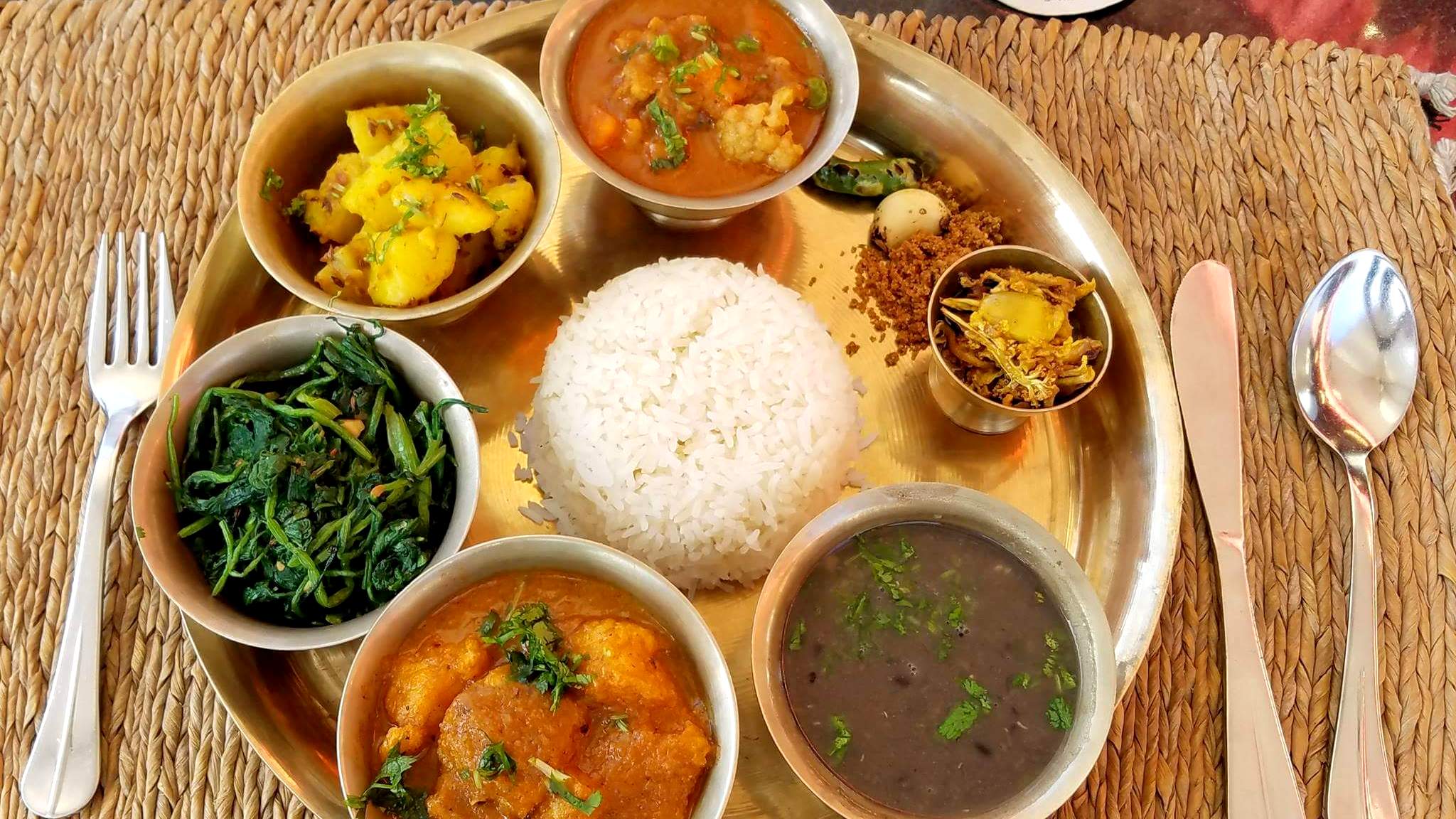
Please note that the availability and quality of accommodation and meals can vary along the Kanchenjunga Expedition route. It's advisable to go with a reputable expedition operator who can ensure proper arrangements and cater to your needs during the journey.
Travel Insurance for the Kanchenjunga Expedition
When embarking on the Kanchenjunga Expedition, it is highly recommended to have comprehensive travel insurance that includes coverage for helicopter evacuation. Given the remote and challenging nature of the expedition, having this specific coverage can provide you with financial protection and peace of mind in case of any emergency or medical evacuation needs.
Here are some key points to consider when choosing travel insurance for the Kanchenjunga Expedition with helicopter evacuation coverage:
Medical Coverage: Ensure that your travel insurance provides sufficient medical coverage for both emergency and non-emergency medical situations. This should include coverage for medical treatment, hospitalization, and medication expenses.
Emergency Evacuation: Verify that the insurance policy covers the cost of helicopter evacuation in case of a medical emergency or any other situations that require immediate evacuation from the mountain region. This coverage should include the high-altitude areas specific to the Kanchenjunga region.
Trip Cancellation and Interruption: Look for coverage that protects you in the event of trip cancellation or interruption due to unforeseen circumstances, such as illness, injury, or other emergencies. This coverage can reimburse non-refundable expenses like flights, accommodations, and expedition fees.
Adventure Sports Coverage: Confirm that your insurance policy covers adventure activities and mountaineering. As the Kanchenjunga Expedition involves high-altitude trekking and climbing, it is essential to have coverage for these types of activities.
Policy Limits and Exclusions: Review the policy limits, deductibles, and exclusions carefully to ensure they align with your needs. Pay attention to any pre-existing condition limitations or specific exclusions related to mountaineering or high-altitude activities.
Emergency Assistance Services: Check if travel insurance provides access to 24/7 emergency assistance services. These services can be invaluable during an emergency situation, providing you with guidance and support.
It is recommended to consult with a reputable insurance provider or broker who specializes in adventure travel or mountaineering insurance. They can guide you in selecting a policy that suits the specific requirements of the Kanchenjunga Expedition, including helicopter evacuation coverage. Carefully read the policy documentation and ask any questions you may have before making a decision to ensure you have appropriate coverage for a safe and worry-free expedition.
Checklist for the Kanchenjunga Expedition
Here's a checklist to help you prepare for the Kanchenjunga Expedition:
Mountaineering Gear
- Climbing harness
- Crampons
- Ice axe
- Helmet
- Ascenders and descenders
- Ropes and carabiners
- Mountaineering boots
- Gaiters
- Trekking poles
Clothing
- Base layers (thermal tops and bottoms)
- Insulated jacket
- Hardshell waterproof jacket
- Hardshell waterproof pants
- Fleece or down jacket
- Trekking pants
- Thermal socks
- Mountaineering gloves
- Hat or beanie
- Sunglasses with UV protection
- Buff or neck gaiter
Camping Equipment
- Tent
- Sleeping bag (suitable for extremely cold temperatures)
- Sleeping pad or mat
- Headlamp with extra batteries
- Cooking stove and fuel
- Cookware and utensils
- Water bottles or hydration system
- Water purification tablets or filter
- Multi-tool or knife
- Lightweight backpack
Personal Essentials
- Passport and permits
- Travel insurance documents
- Cash and credit cards
- First aid kit (including medications for altitude sickness)
- Sunscreen and lip balm (with high SPF)
- Personal toiletries
- Wet wipes or hand sanitizer
- Personal snacks and energy bars
- Camera or GoPro with extra batteries
- Mobile phone and charger (with power bank)
- Maps and navigation tools
Fitness and Health
- Pre-expedition training program
- Altitude acclimatization plan
- Medical check-ups and consultations
- Prescription medications
- High-calorie and nutritious food for the climb
- Hydration system or water bladder
- Electrolyte powder or tablets
Miscellaneous
- Duffle bags or backpacks for gear transport
- Locks for equipment security
- Repair kit (for gear and clothing)
- Trash bags (to pack out waste)
- Trekking poles
- Portable altitude chamber (optional)
- Satellite phone or communication device (optional)
Remember, this checklist is a general guide. Customize it according to your specific needs, preferences, and the recommendations of your expedition team or guide. Make sure to thoroughly test and familiarize yourself with your gear before the expedition to ensure everything is in working order.
Tips for the Kanchenjunga Expedition
Here are the tips for the Kanchenjunga Expedition summarized in bullet points:
- Prioritize physical fitness and endurance training.
- Allow for proper acclimatization with gradual altitude gains and rest days.
- Hire experienced guides or join a reputable trekking agency.
- Respect local culture, traditions, and fragile environments.
- Stay hydrated and maintain a balanced diet.
- Pack lightweight, layer-able clothing and essential gear.
- Stay updated with weather forecasts and follow expert advice.
- Prepare mentally for the challenges and embrace the journey.
- Ensure comprehensive travel insurance and obtain necessary permits.
- Listen to your body, communicate any discomfort, and prioritize safety.
These tips will help you prepare effectively and make the most of your Kanchenjunga Expedition.
FAQ (Frequently Asked Questions) for the Kanchenjunga Expedition in Nepal
Q: Where is Kanchenjunga located?
A: Kanchenjunga is located on the border between Nepal and the Indian state of Sikkim in the Eastern Himalayas.
Q: What is the height of Kanchenjunga?
A: Kanchenjunga is the third-highest mountain in the world, with an elevation of 8,586 meters (28,169 feet).
Q: How long does it take to climb Kanchenjunga?
A: The duration of the Kanchenjunga Expedition can vary depending on several factors, including the chosen route and weather conditions. On average, it takes around 50-60 days to complete the climb.
Q: Is climbing Kanchenjunga technically challenging?
A: Yes, climbing Kanchenjunga is considered one of the most technically challenging expeditions in the Himalayas. It requires advanced mountaineering skills, experience with high-altitude climbing, and the ability to navigate steep and treacherous terrain.
Q: Can I climb Kanchenjunga without previous mountaineering experience?
A: No, it is strongly recommended to have prior mountaineering experience, especially at high altitudes, before attempting to climb Kanchenjunga. This expedition is suitable for experienced mountaineers who have successfully climbed other peaks above 7,000 meters.
Q: What permits are required for the Kanchenjunga Expedition?
A: To climb Kanchenjunga, you need several permits, including a climbing permit issued by the Nepalese government, a trekking permit, and a restricted area permit for the Kanchenjunga Conservation Area.
Q: When is the best time to climb Kanchenjunga?
A: The best time to climb Kanchenjunga is during the spring (April to May) and autumn (September to October) seasons. These months offer stable weather conditions and clearer skies, which are ideal for mountaineering.
Q: Is it necessary to hire a local guide for the Kanchenjunga Expedition?
A: Yes, hiring a local guide or joining a reputable expedition company is highly recommended for the Kanchenjunga Expedition. They provide valuable expertise, knowledge of the terrain, and logistical support, and ensure your safety throughout the climb.
Q: What are the risks and challenges associated with climbing Kanchenjunga?
A: Climbing Kanchenjunga poses various risks and challenges, including high altitude sickness, extreme weather conditions, avalanches, crevasses, and difficult technical sections. Adequate physical fitness, proper acclimatization, and cautious decision-making are crucial to mitigate these risks.
Q: Can I arrange a helicopter evacuation in case of an emergency on Kanchenjunga?
A: Helicopter evacuations are possible in case of emergencies on Kanchenjunga. It is important to have comprehensive travel insurance that includes coverage for helicopter evacuations to ensure prompt and efficient rescue operations if required.
Similarly other 8000-meter Mountain Expedition Packages
Makalu Expedition (8,463m)
Manaslu Expedition (8,163 m)
Dhaulagiri Expedition (8,167 m)
Lhotse Expedition (8,516 m)
Mt. Everest Expedition (8848.86 m)
7000-meter peaks for Climbing and Expedition in Nepal
Gangapurna Expedition (7,455 m)
Pumori Expedition (7,145 m)
Tilicho Peak Expedition (7,134 m)
Annapurna South Expedition (7,219 m)
6000-meter peaks for Climbing and Expedition in Nepal
Mt Ama Dablam Expedition (6,812 m)
Island Peak Expedition (6,160 m)
Mera Peak Climbing (6,476 m)
Chulu West Peak Climbing (6,419 m)
Pisang Peak Climbing (6,091 m)
Singu Chuli Peak Climbing (6,501 m)
If you need any further information, please contact us by email: at [email protected], Phone: at +977- 985 100 5129 (WhatsApp)
#Tags
Tripadvisor
5.0928 reviewsGoogle
4.8114 reviewsFacebook
4.1 recommend44 ReviewsTrustpilot
4.1 Great(5 reviews)- Trusted by50K plus traveller




